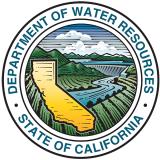California-Nevada Drought and Climate Outlook Webinar: September 27, 2021
According to the September 9 U.S. Drought Monitor, 100% of California and Nevada are in drought, with 79.6% in Extreme (D3) or Exceptional (D4) Drought. Continued drying has enhanced wildfire risk throughout the region, reflected in several continuing very large wildfires in northern California. Further, forecasts increasingly reflect the potential for La Niña development in the fall and into the winter. Historically, La Niña is associated with dry to normal conditions in the southern part of California and Nevada.
The California-Nevada Drought Early Warning System September 2021 Drought & Climate Outlook Webinar is part of a series of regular drought and climate outlook webinars designed to provide stakeholders and other interested parties in the region with timely information on current drought status and impacts, as well as a preview of current and developing climatic events (i.e., El Niño and La Niña).






